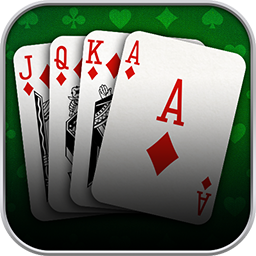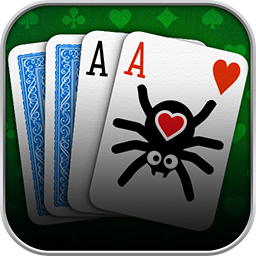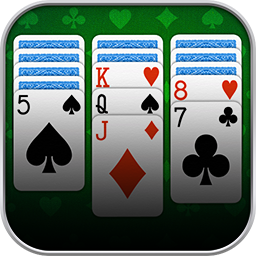Start here and learn how to play Gin Rummy! The classic card game is most popular in the USA and can entertain two players with fast and intense gaming fun. In this article, we cover the rules of Gin Rummy in detail.
As you can probably guess from the name, it belongs to the Rummy family, meaning the Gin Rummy rules bear some similarities to other Rummy games. But unlike in Rummy, you don’t lay your melds on the table here, and the round doesn’t end when a player runs out of cards. Instead, you collect your melds in your hand until a player announces the end of the round. This is followed by scoring and possibly the next round. However, the round is aborted without scoring when there are only two cards left in the draw pile.
On this page, we will guide you through how to play Gin Rummy. You can also choose a topic at the bottom of the page to learn more details. Let’s dive straight into the rules of Gin Rummy!
How Many Players in Gin Rummy
In classic Gin Rummy, two players compete against each other, however it can also be played by four players. The rules for Gin Rummy set out in this article relate to the two player game. At the Gin Rummy Palace, you can play the classic two player version, and soon we will offer four player Gin Rummy, whereby you play in teams of two. The rules for this special game mode are covered on our dedicated page about Gin Rummy with four players.
Objective and Points in Gin Rummy
The goal of the game is to combine as many cards as possible into melds in your hand. Once you succeed, you can announce the end of the round by knocking. Then, a comparison is made to see who has fewer points outside of melds between the two players. If it’s you, you receive victory points. If it’s your opponent, the victory points go to them.
Now let’s take a look at how you can obtain cards for your melds, what constitutes valid melds, and other details of the game flow.
Cards and Dealing in Gin Rummy
For Gin Rummy, you use a deck of 52 cards with French suits and no Jokers. This means there are 13 ranks in the classic four suits: Clubs, Spades, Hearts, and Diamonds.
The ranks are Ace, Two, Three, Four, Five, Six, Seven, Eight, Nine, Ten, Jack, Queen, and finally King. Each rank has a point value that carries weight during the scoring at the end of the round. Unlike in Rummy, in Gin Rummy, the Ace can only precede the Two, never follow the King, and is always worth one point.
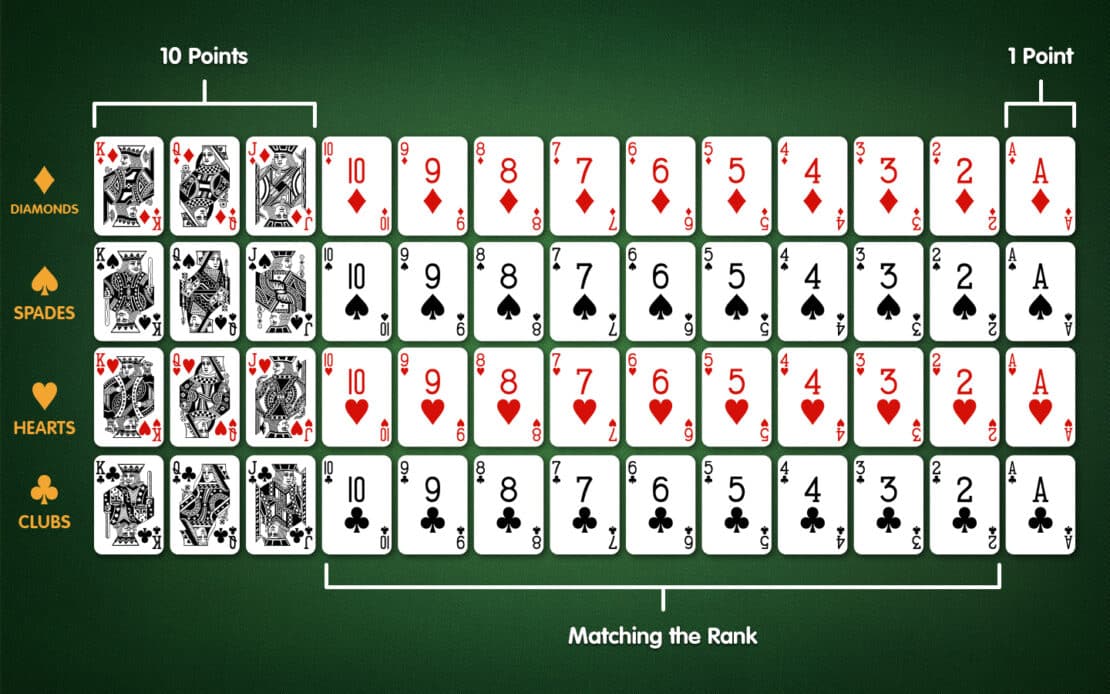
How Many Cards Are Dealt in Gin Rummy
At the start of the round, the cards are shuffled. You can determine the first dealer in your Gin Rummy Round as you like. At the Gin Rummy Palace, the app makes this choice for you. In subsequent rounds, the dealer position changes every round. After shuffling, each player is dealt 10 cards. The remaining cards are set aside as the draw pile.
The First Card in Gin Rummy
Once everyone has received their cards, the dealer discards the top card of the draw pile face-up as the discard pile’s base. This marks the beginning of the playing phase. If you are not the dealer, you can now decide whether you want to draw the face-up card. If you choose to do so, your first turn begins immediately by adding this card into your hand.
However, if you do not want to draw this card, you pass at this point and leave the choice to the dealer. If they want, they can now begin their first turn by adding this card into their hand.
If the dealer also passes, your first turn begins by drawing the top card of the face-down draw pile and adding it your hand.
We also prepared a deeper dive into the starting options in Gin Rummy. But next here, let’s see what actions are possible during a turn.
The Turn in Gin Rummy
Regardless of whose turn it is, a turn always starts with drawing a card. Except for the first card of the game, you can always choose freely between drawing from the face-down draw pile and the face-up discard pile.
After that, you look at how you can combine your cards into melds, aiming to have the fewest or lowest value cards outside of melds. We will explain the valid melds in Gin Rummy in the next section. We also delve deeper into worthwhile card combinations along the way to melds in the corresponding Gin Rummy Lesson.
To end your turn, you must discard a card. It is advisable to choose a card that you cannot fit into any meld. If you can meld all your cards after discarding one, you should instead announce that you want to end the round. We will discuss this further below.
Through custom Gin Rummy Rules, more options become available: catching the glass and boasting. You can find details on the topic on our website about rule variants in Gin Rummy.
Once you have discarded your card, it is your opponent’s turn.
Melds in Gin Rummy
Throughout the entire play phase, you can arrange the cards in your hand into melds. Since you never play them until the end of the round, it doesn’t matter whether you do this during your turn or your opponent’s turn.
Please note: When you play at the Gin Rummy Palace, and your opponent knocks, your hand is going to be scored exactly as it is at that moment, and you cannot rearrange it anymore. Thus, it makes sense to sort your hand as much as possible during your turn.
Each card can only be used for one meld. Cards that do not belong to a complete meld at the end of the round are called deadwood. Your deadwood’s value will go toward your opponent’s score at the end of the round. The lower your deadwood, the better for you.
Groups and Sequences in Gin Rummy
Similar to Rummy, you can form melds as groups and sequences in Gin Rummy. In both cases, a meld must consist of at least three cards.
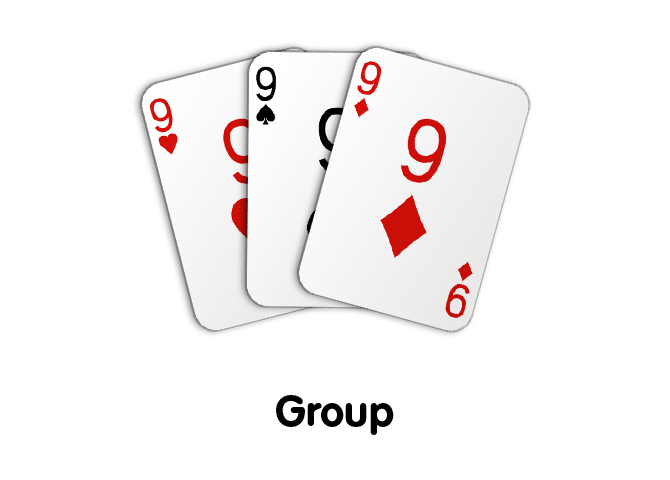
Groups or sets can be formed with three or four cards of the same rank.
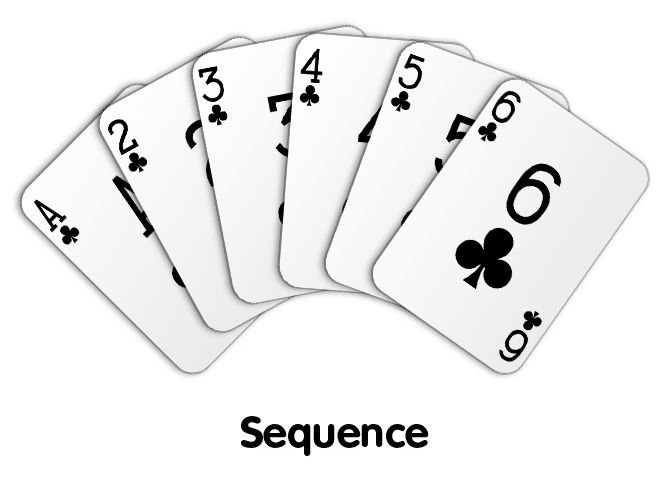
Sequences consist of three to 13 consecutive cards of the same suit. Since you only have 10 hand cards, you will only be able to fit 10 cards in a sequence. Each rank can only appear once in a sequence. The following order is valid: Ace, Two, Three, Four, Five, Six, Seven, Eight, Nine, Ten, Jack, Queen, and King. Unlike in Rummy, the Ace cannot be at the end of a sequence in Gin Rummy! It also cannot be surrounded by other cards.
You can find general Gin Rummy tips and strategies as well as advice on promising card combinations in our Gin Rummy Lessons.
Once you realize that you can form enough melds so that only cards worth a maximum of 10 points remain, you can declare the end of the round by knocking before discarding your last card.
End of the Round in Gin Rummy
Usually, one of the two players ends the round. More precisely, you can initiate the end of the round before discarding your last card by knocking. Before we get to that, let’s clarify another way the round can end.
Draw Pile Runs Out
As the draw pile diminishes, the end of the round gets closer.
If you draw the third-to-last card from the draw pile, you can still complete your turn normally. However, if you do not knock in this turn, the round is immediately ended and not scored. Instead, the same dealer reshuffles and deals without scoring.
But how can you end a Gin Rummy round in a regular way?
Knocking in Gin Rummy
After drawing a card and before discarding a card, you can knock during your turn. By doing so, you announce that you want to end the play phase of this round.
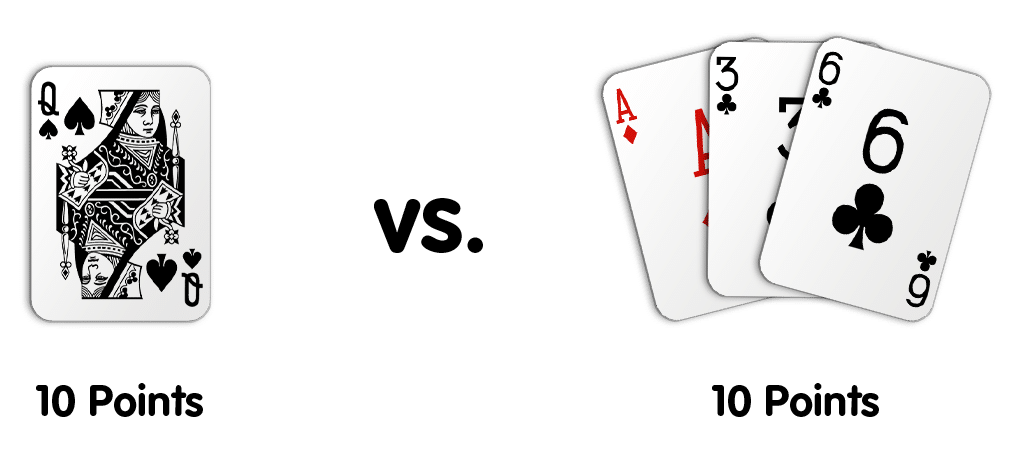
However, you can only knock once the value of the cards in your hand that you cannot fit into melds, i.e., your deadwood, is a maximum of 10 points. It doesn’t matter how many cards that is.
If you have reduced your deadwood to 10 points, you are also never forced to knock. However, you must continue to draw and discard cards in your turns until the round is over.
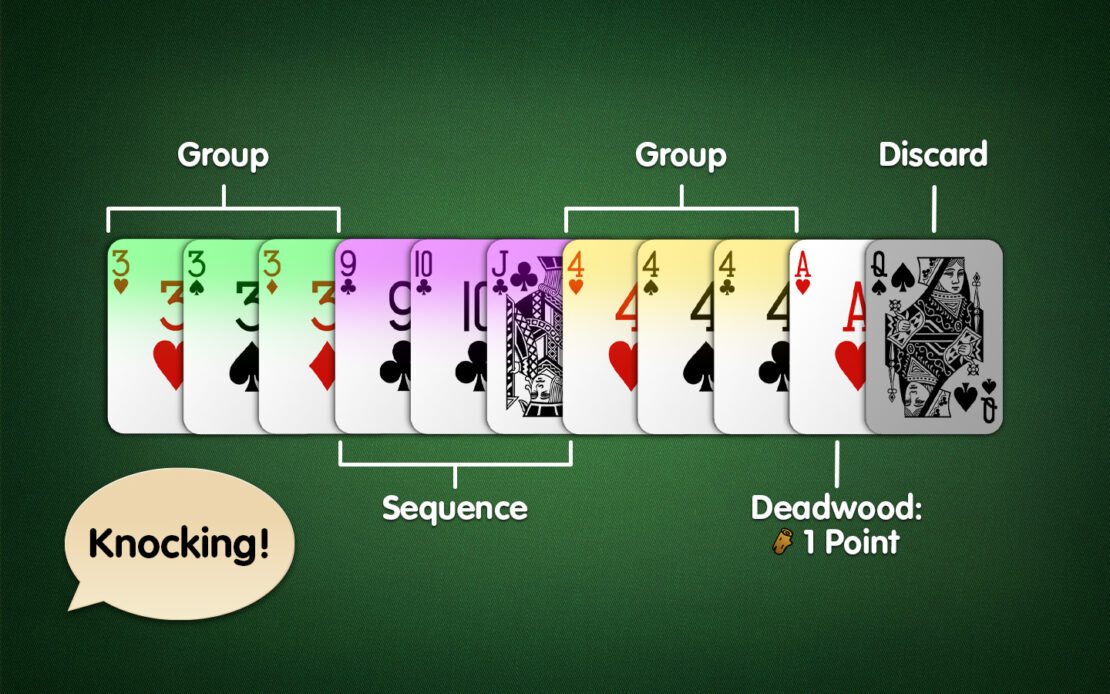
This is a great point to knock!
Revealing and Laying Off
After knocking, you must first discard one of your remaining hand cards as the last card onto the discard pile. All further steps are carried out automatically in the Gin Rummy Palace, but we will still want to break them down for you:
Now, you lay your hand cards openly on the table. Sort them according to melds and deadwood, if you have any, and announce the deadwood points if necessary.
Next, your opponent also lays out all their melds from their hand onto the table.
If you have revealed any deadwood, your opponent can then lay off their remaining cards from their hand, their deadwood cards, onto your melds. The laid-off cards no longer count as their deadwood.
They are not allowed to use your deadwood cards or detach cards from your melded combinations.
Finally, when all cards are on the table, the round is evaluated.
Scoring in Gin Rummy
During scoring, the card values of the respective deadwood of both players are compared, which are the cards that are not part of melded combinations after laying off and melding.
In short, after knocking, you win if either you have no deadwood or you have fewer deadwood points. Otherwise, your opponent has achieved an undercut and wins.
A special case is called Gin. If you manage to have no deadwood remaining after discarding, you have played Gin. This comes with several advantages: firstly, your opponent is no longer allowed to lay off cards on your melds. Secondly, they cannot achieve an undercut and challenge your victory. And thirdly, you earn hefty bonus points.
You can find a detailed explanation of the scoring on our dedicated page about scoring in Gin Rummy.
End of the Game in Gin Rummy
Usually, Gin Rummy is played up to a predetermined total score. The victory points accumulated over the rounds are added up for each player. If either player reaches this threshold, the game ends, and that player wins.
At the Gin Rummy Palace, you can choose playing to a total score between 10 and 500 points.
More about Gin Rummy
Now you know the rules of Gin Rummy. If you want to learn more about our four-player variant, interesting variants or take a detailed look at the scoring at the end of the round, you can click on the appropriate topic here! If you want all the Gin Rummy Details, make sure to check out our Gin Rummy Lessons.

